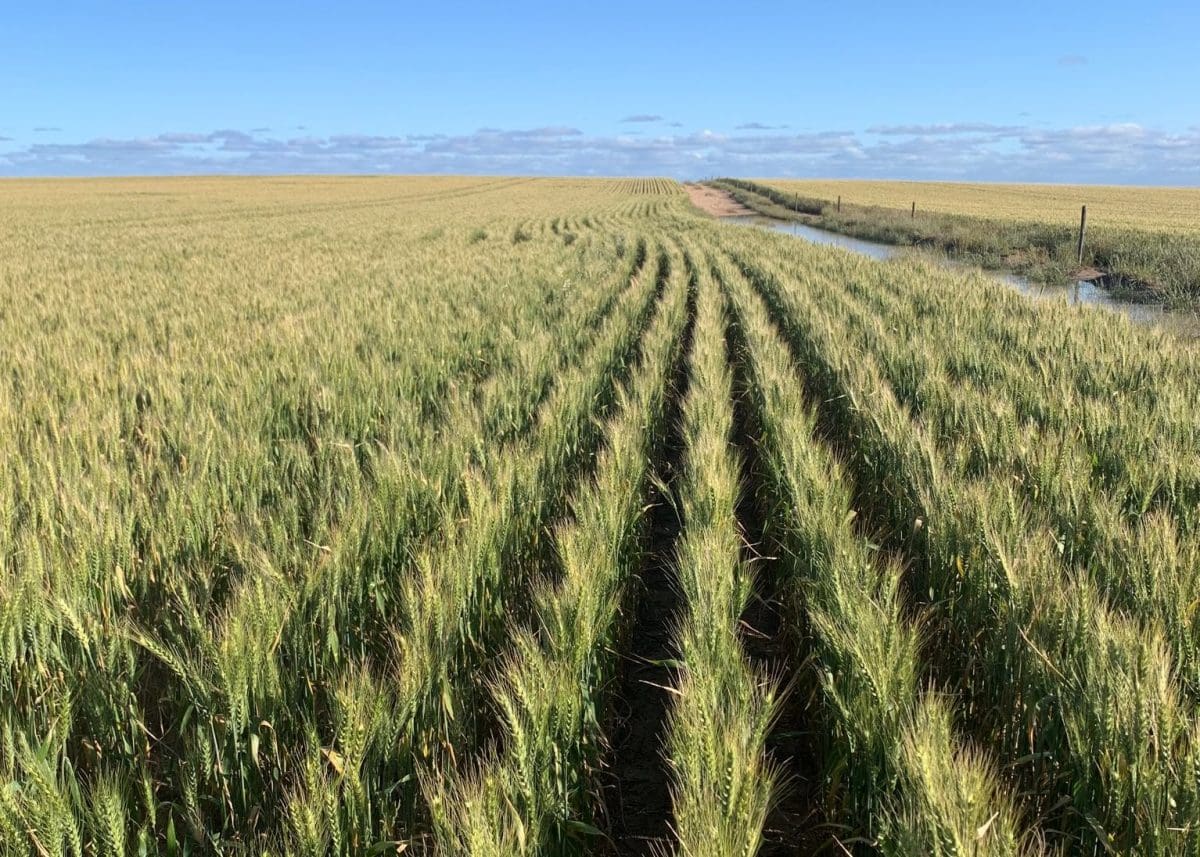
Crops in South Australia like this Scepter wheat have benefited from rain this month. Photo: Andrew Polkinghorne, Lock
THE Department of Primary Industries and Regions South Australia (PIRSA) Crop and Pasture Report estimates SA’s 2020-21 grain production at 7.9 million tonnes (Mt), just under the 10-year average of 8Mt, and down 200,000t from the 8.1Mt forecast in July.
SA Minister for Primary Industries and Regional Development David Basham said the report estimates farm-gate value from this season’s harvest will increase to $2.2 billion.
“While farmers continue to battle drought across the state, recent rains have provided increased optimism for the grain sector for the 2020-21 season,” Mr Basham said.
“The report is predicting almost 4 million hectares of grain crops have been sown, the most since 2013-14.
“The estimates point to a stronger performance compared to the same time last year, despite below-average rainfall being experienced from May through to late August.”
| TONNES | 5-yr average to 2019-20 | 2019-20 | 2020-21 July | 2020-21 Sep |
| Wheat | 4,261,200 | 3,251,500 | 4,557,800 | 4,391,500 |
| Durum | 118,700 | 82,560 | 92,360 | 95,760 |
| Barley | 2,042,100 | 2,091,000 | 2,235,500 | 2,197,500 |
| Oats | 150,600 | 120,450 | 142,300 | 150,200 |
| Field peas | 103,400 | 70,100 | 94,600 | 97,300 |
| Faba beans | 116,400 | 156,650 | 168,150 | 171,450 |
| Lentils | 245,200 | 220,400 | 294,720 | 293,220 |
| Canola | 310,800 | 347,400 | 345,350 | 345,900 |
Table 1: SA winter crops with 2020-21 production forecast to exceed 90,000t. Source: PIRSA
Across the northern Eyre and Yorke peninsulas, and parts of the northern agricultural districts, yields are expected to be below average after losing potential over the unusually dry winter.
The report states rainfall in the pastoral zone in August and September is promoting new feed growth, although it advises producers in most districts will likely need to continue to supplementary feed stock until pastures improve.
The report has highlighted persistent dry and frosty conditions through early to midwinter, which led to a slowing of crop growth in most areas of the state.
While the dry winter conditions have contributed to low disease levels, there have been reports of insect pests causing crop damage, with red-legged earth mite across crops and pastures, Russian wheat aphid in cereals, and cowpea aphid in pulse crops.
Producers are implementing treatment strategies to minimise their impact.
Data in the report was current as of 7 September, and the report was released on 1 October.
Source: SA Government

HAVE YOUR SAY